ISIS VERSION OF TAROT DE MARSEILLE
Tarot de Marseille
The Tarot de Marseille is not a tool of divination, but rather, an instrument
of Self-discovery, Self-acknowledgement and Self-realization. You can find
your inner and Higher Self, understand the state of your affairs, and realize
your true Self through the Tarot. It is a tool to awaken the deepest insights,
the wisdom born within us, the inner guidance that cannot be taught.
The Tarot de Marseille is a spiritual tradition originating in Southern
Europe, preserved since ancient times. It is like a museum on paper, where
the wisdoms derived from ancient Mysteries of Egypt, Asia, Greece, India,
the Celtic world, and the Abrahamic traditions can all be found, hidden
in symbolism. As use of the Tarot has grown and spread throughout many
cultures, Tarot has taken its rightful place as part of the shared spiritual
legacy of all humankind.
ISIS VERSION
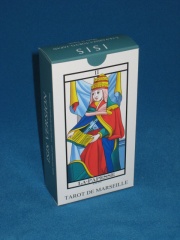 The ISIS version of The Tarot of Marseille was produced to advance these
ancient wisdoms and traditions by Tadahiro Onuma, a Japanese philosopher,
in 2010.
The ISIS version of The Tarot of Marseille was produced to advance these
ancient wisdoms and traditions by Tadahiro Onuma, a Japanese philosopher,
in 2010.
For forty years. Tadahiro studied the Kabbalah and Tarot. Tadahiro also
practiced Pathworking with the Tarot de Marseille. Pathworking is the practice
of meditating on the cards using creative visualization. In the Tree of
Life of Kabbalah, there are 10 spheres and 22 paths that connect them,
and these paths correspond to the 22 cards of the Major Arcana. By Pathworking
on a daily basis, Mr. Onuma has connected with the entities of the archetypal
figures pictured in the Major Arcana.
The ISIS version of Tarot de Marseille is a faithful reproduction of the
Conver Tarot deck from 1760. The images are represented in three dimensions,
as Tadahiro saw them in his Pathworkings. One day, Tadahiro noticed a small
bee behind the visualized Mat, and the next day saw the same bee in front
of the Force, a delightful discovery indeed. And so he included a bee in
LE MAT and La FORCE.
The design of the card back is derived from "millions of butterfly"
of Edo-Komon, the traditional pattern of Kimono, or Japanese robe, which
was popular in the 18th Century.
The composition
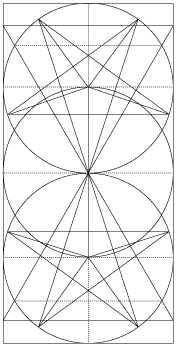 The oldest Tarot de Marseille can be traced back to the beginning of the
17th Century. All versions of Tarot de Marseille include these characteristics.
The oldest Tarot de Marseille can be traced back to the beginning of the
17th Century. All versions of Tarot de Marseille include these characteristics.
The proportion of the card is always the equivalent of two equilateral
squares joined. It resembles an ancient altar made of two cubes.
There are frames at the top and bottom of each of Major Arcana card. containing
a Roman numeral at the top and the name of the card in French at the bottom.
The number frame for LE MAT is blank and Arcana XIII has no name.
According to Alain Bocher*, a French Tarot scholar, each card of Tarot
de Marseille is depicted in a geometric composiiton consisting of three
circles, two squares, two triangles and two pentagrams.
* Alain Bocher, Les Cahier du Tarot I, (Edition Partage,1989)
The original dimensions of outer black frame of the Conver Version are
59 mm X 117 mm. The dimensions of the ISIS Version are just 60mm X 120
mm.
You can check the composition on each card of the ISIS Version in the following
pages;
LE MAT to LE PAPE
LAMOVROVX to LA FORCE
LE PENDU to LE TOIILE
LA LUNE to LE MONDE
A Comparison of Conver Version and ISIS Version
| Conver Version 1760 | ISIS Version 2010 |
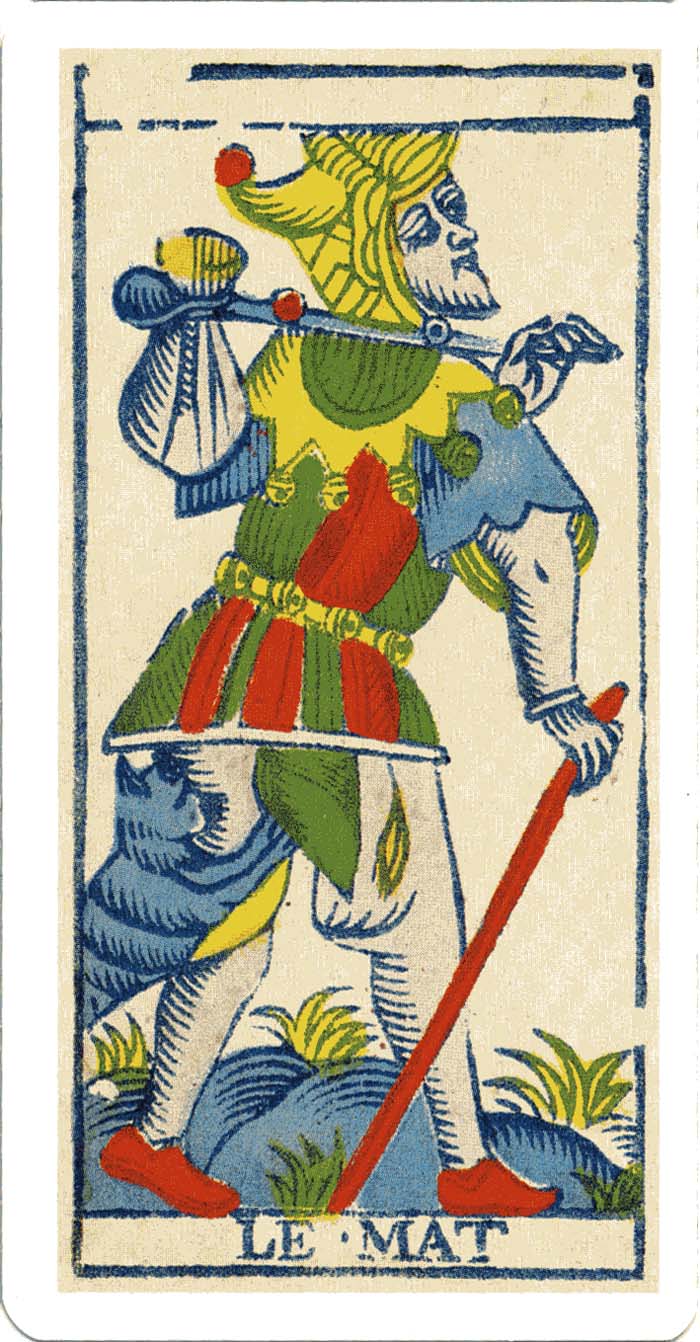 |
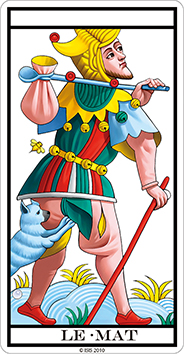 |
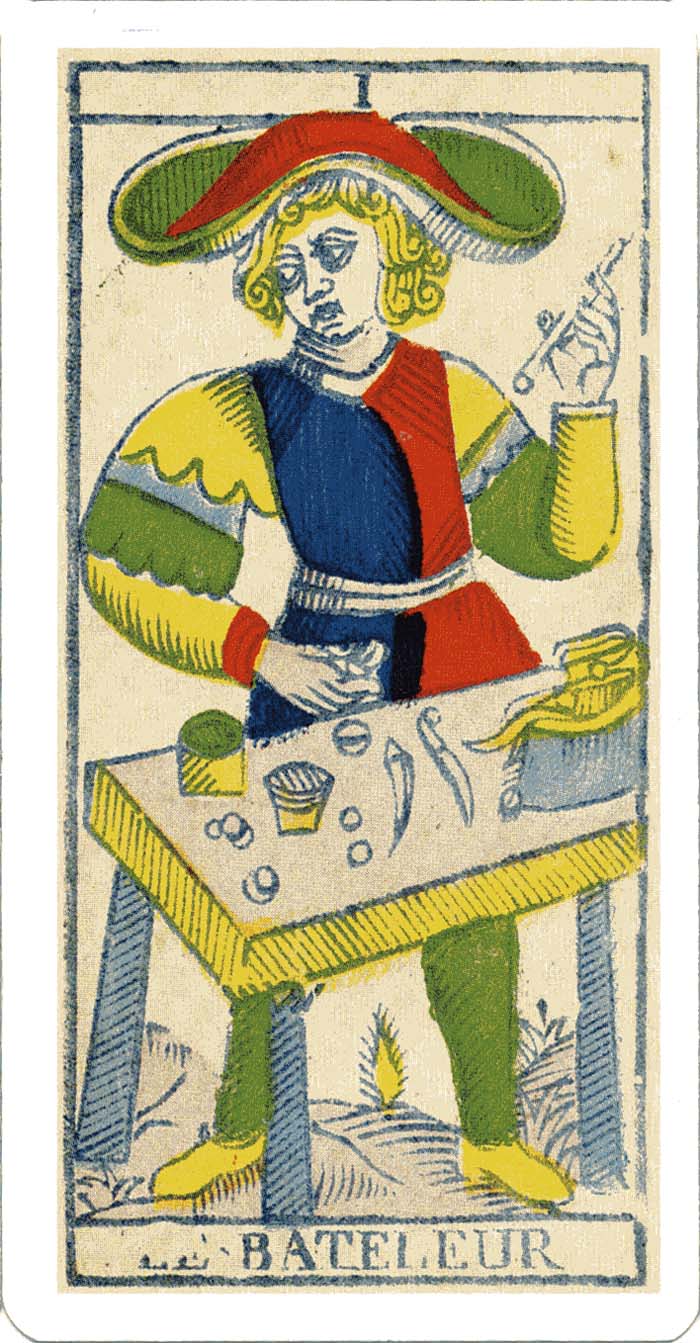 |
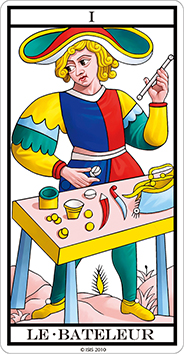 |
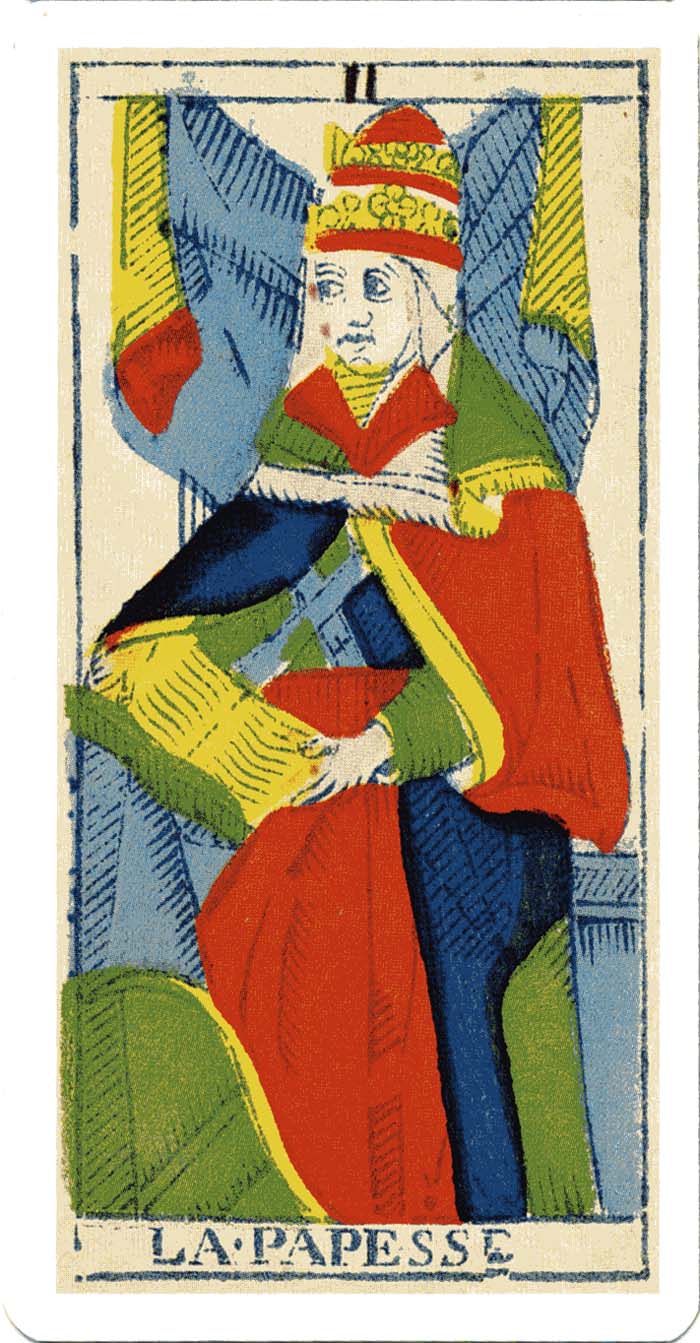 |
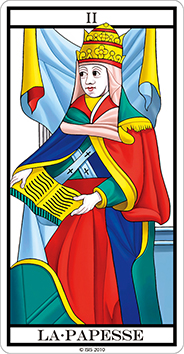 |
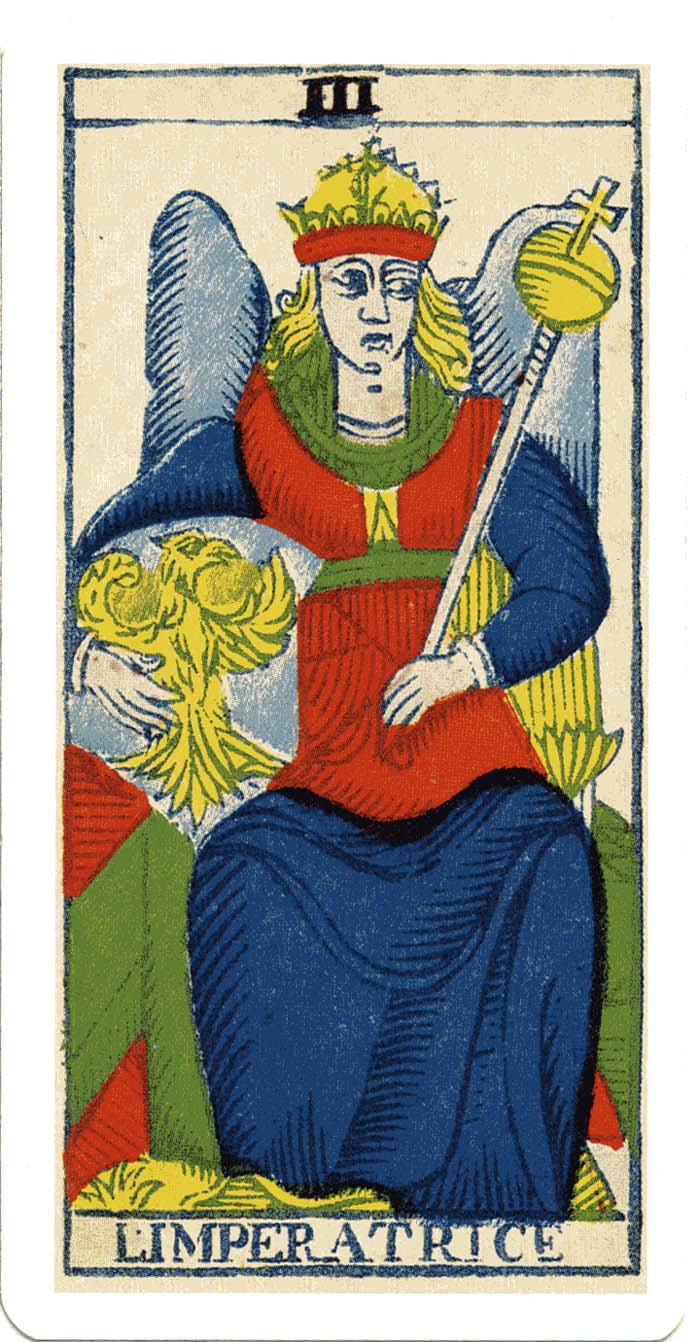 |
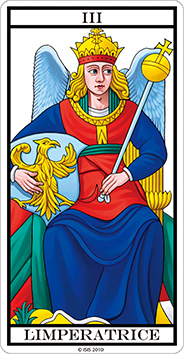 |
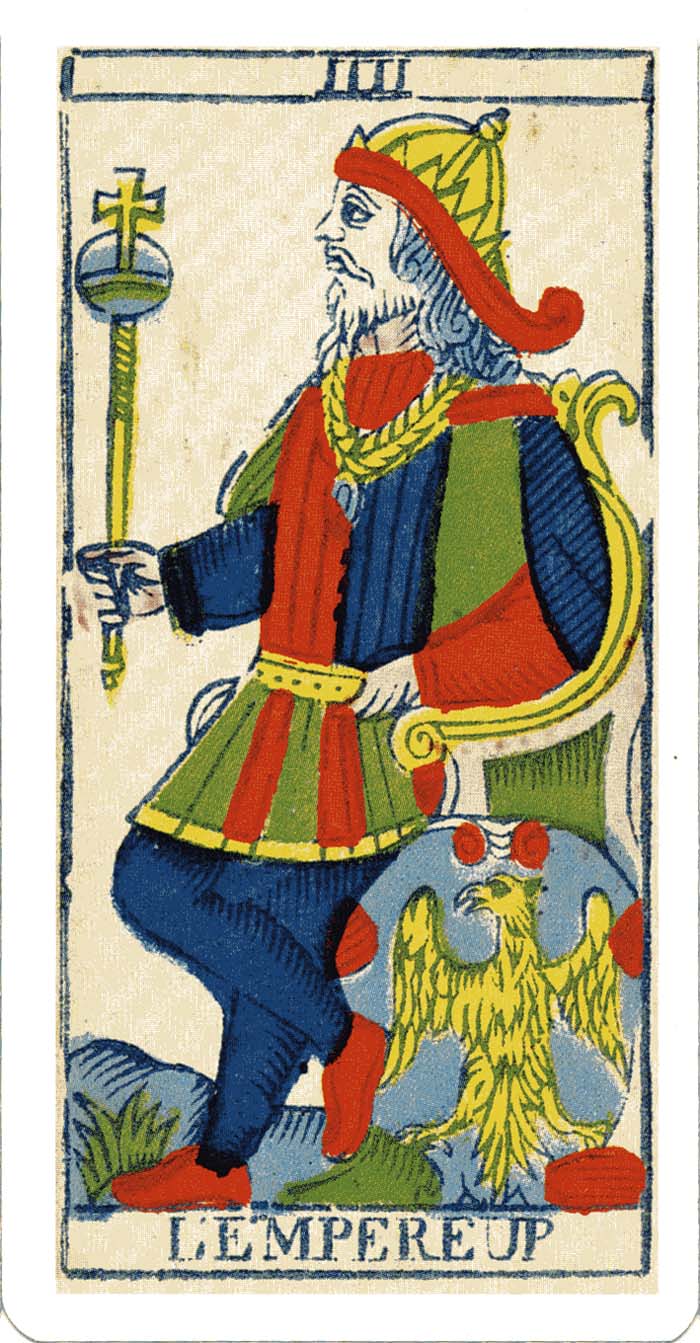 |
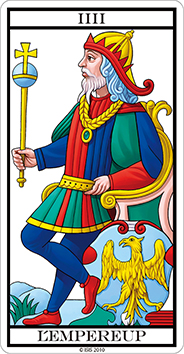 |
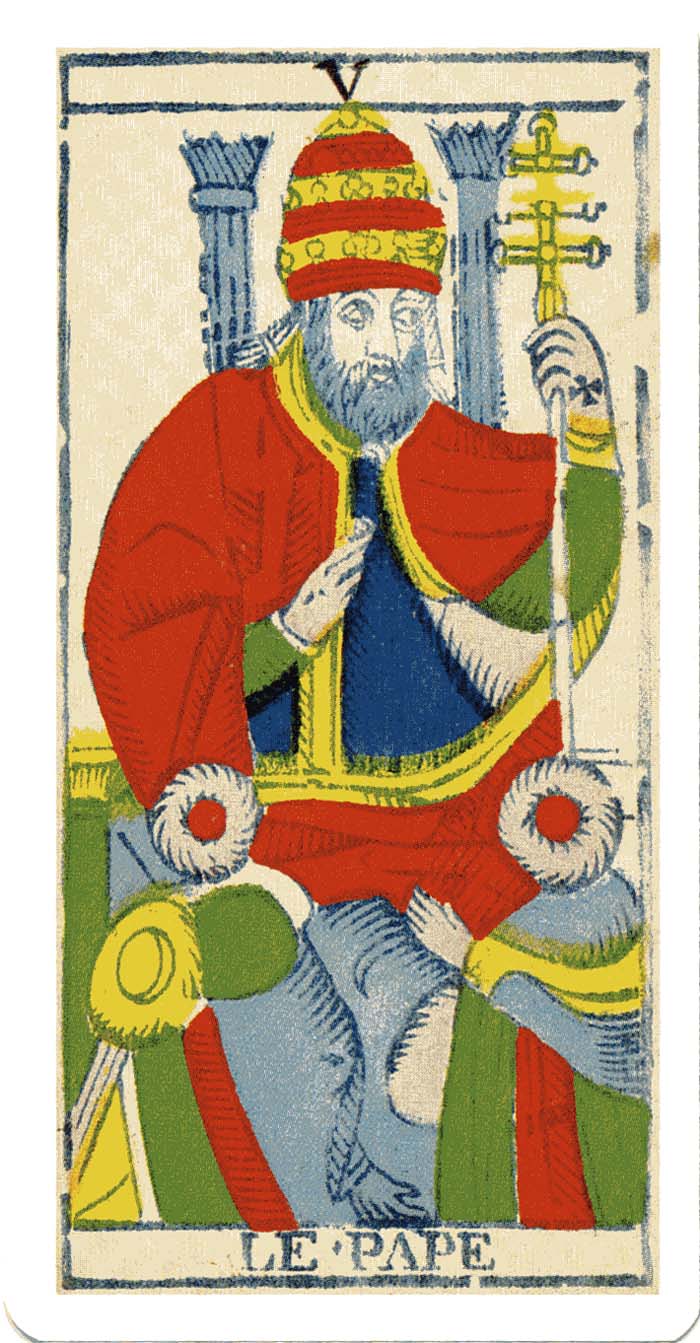 |
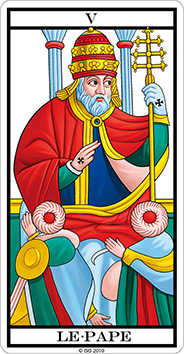 |
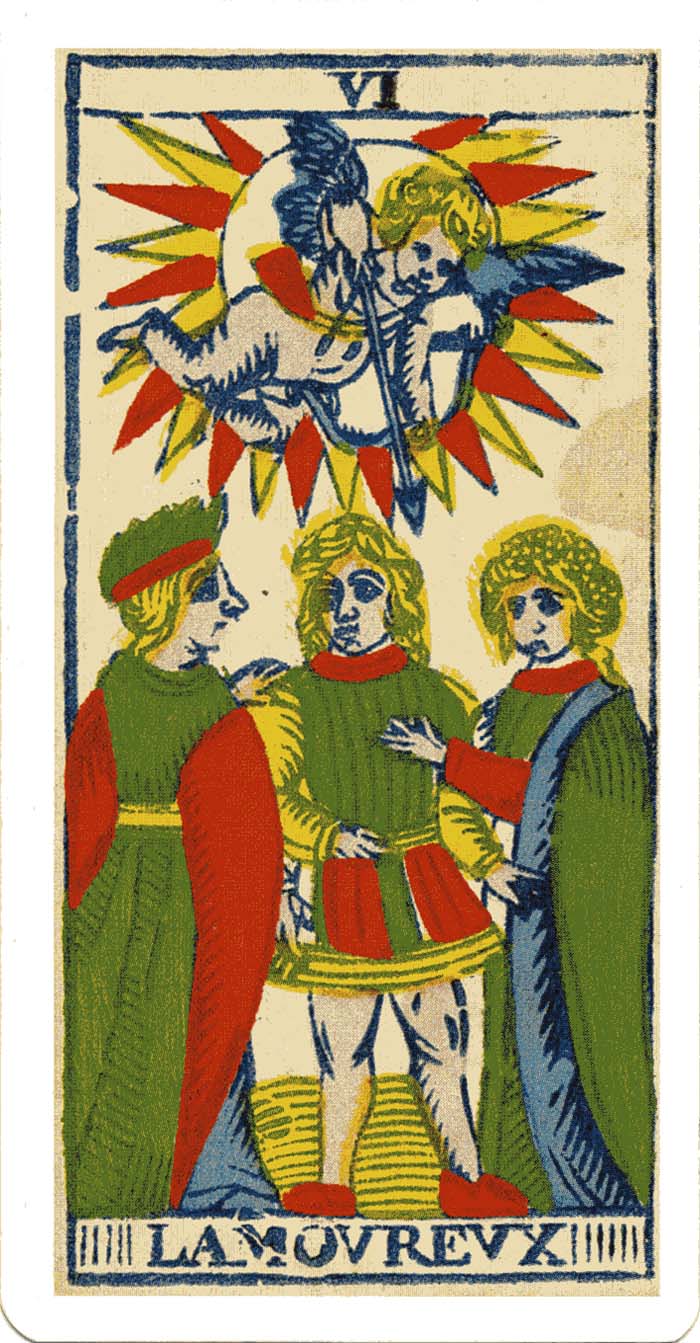 |
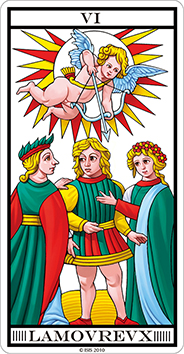 |
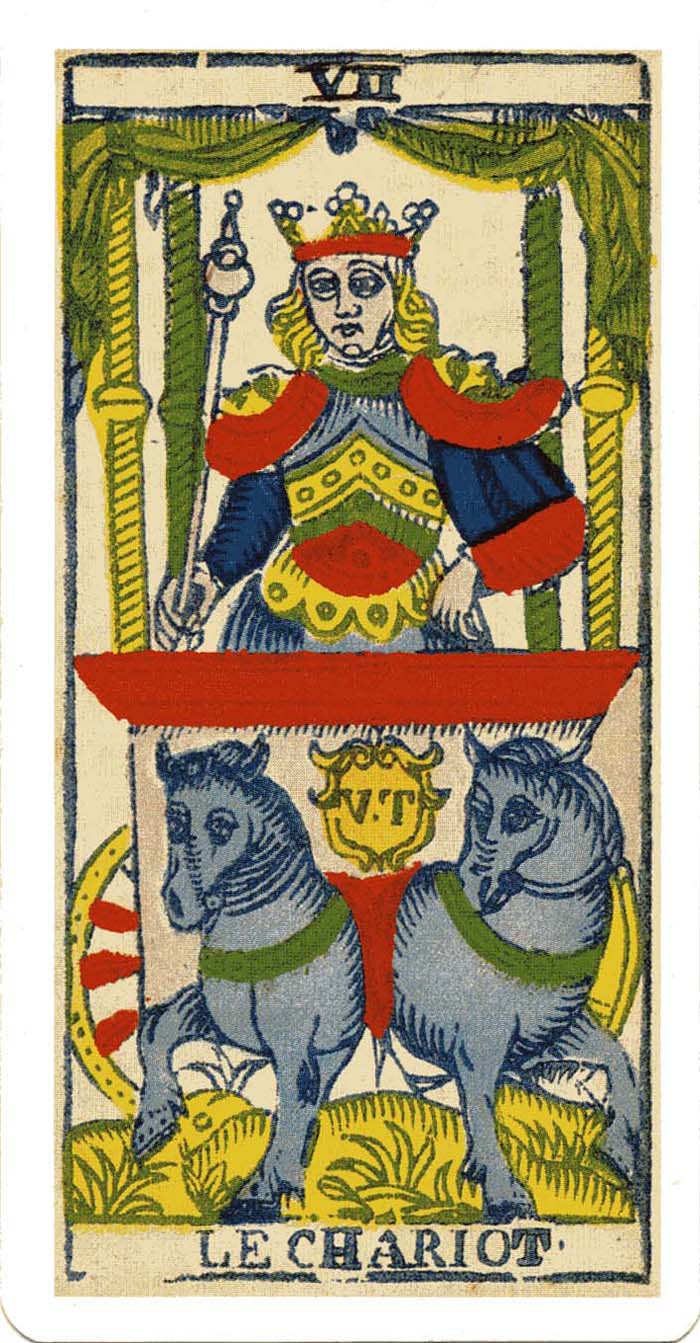 |
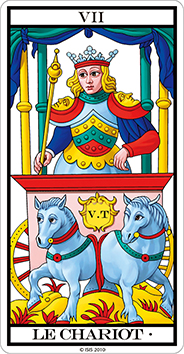 |
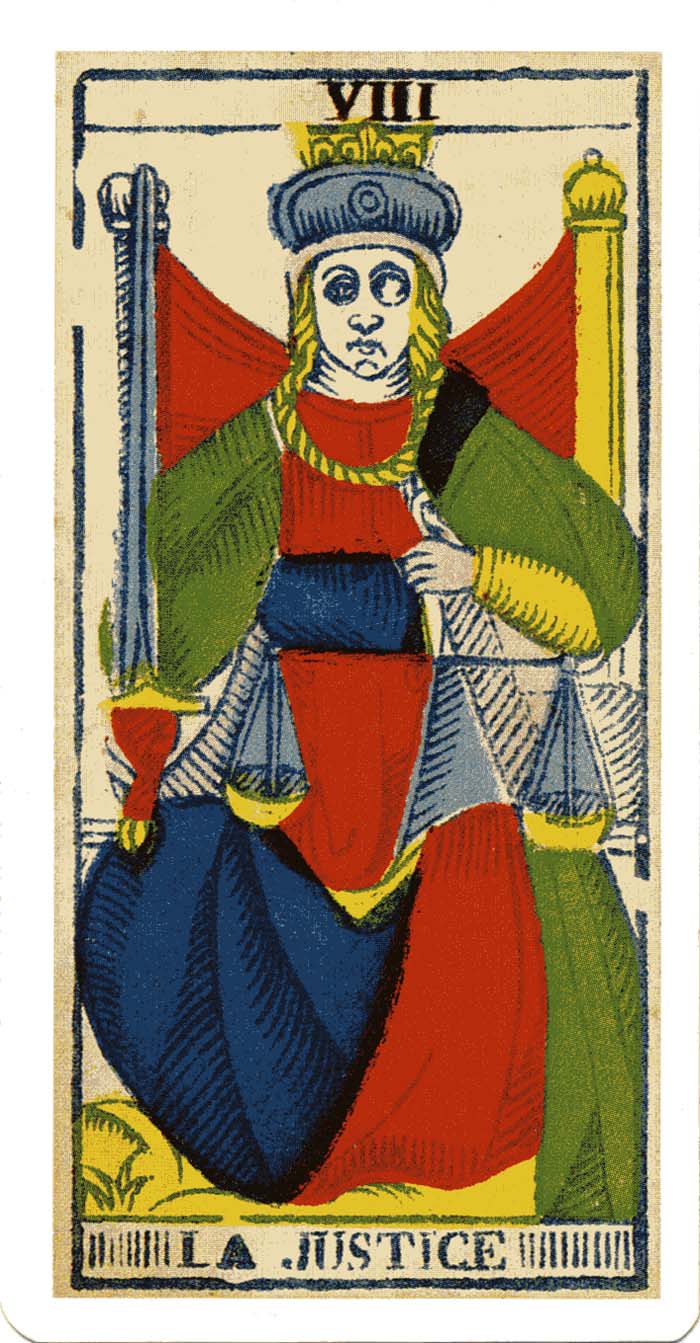 |
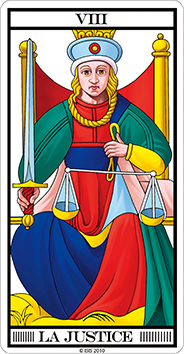 |
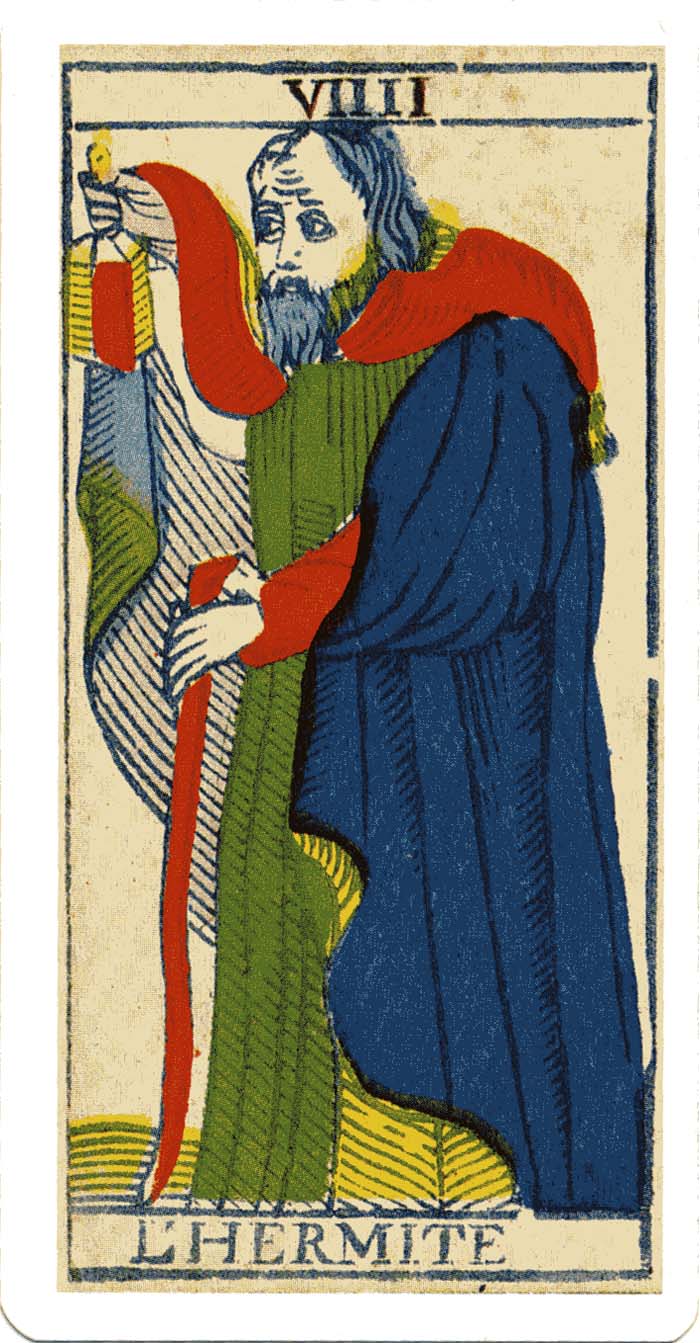 |
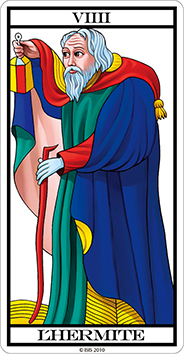 |
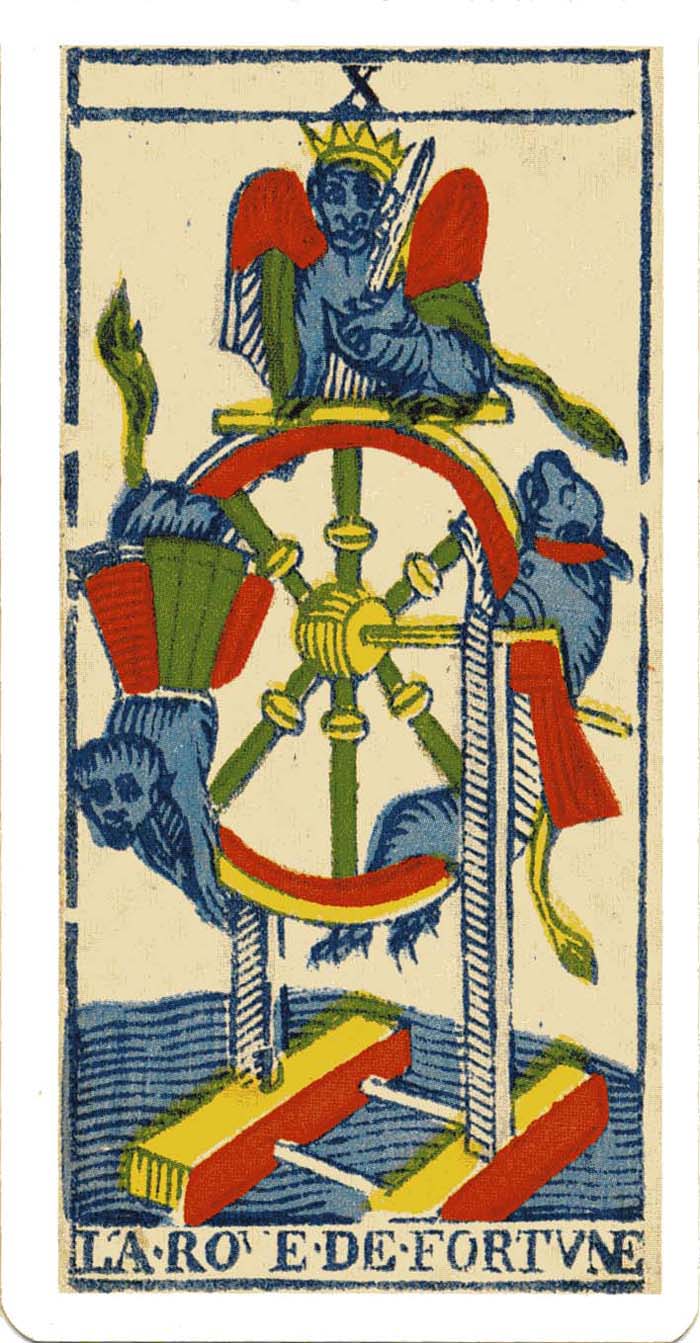 |
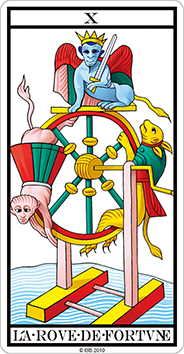 |
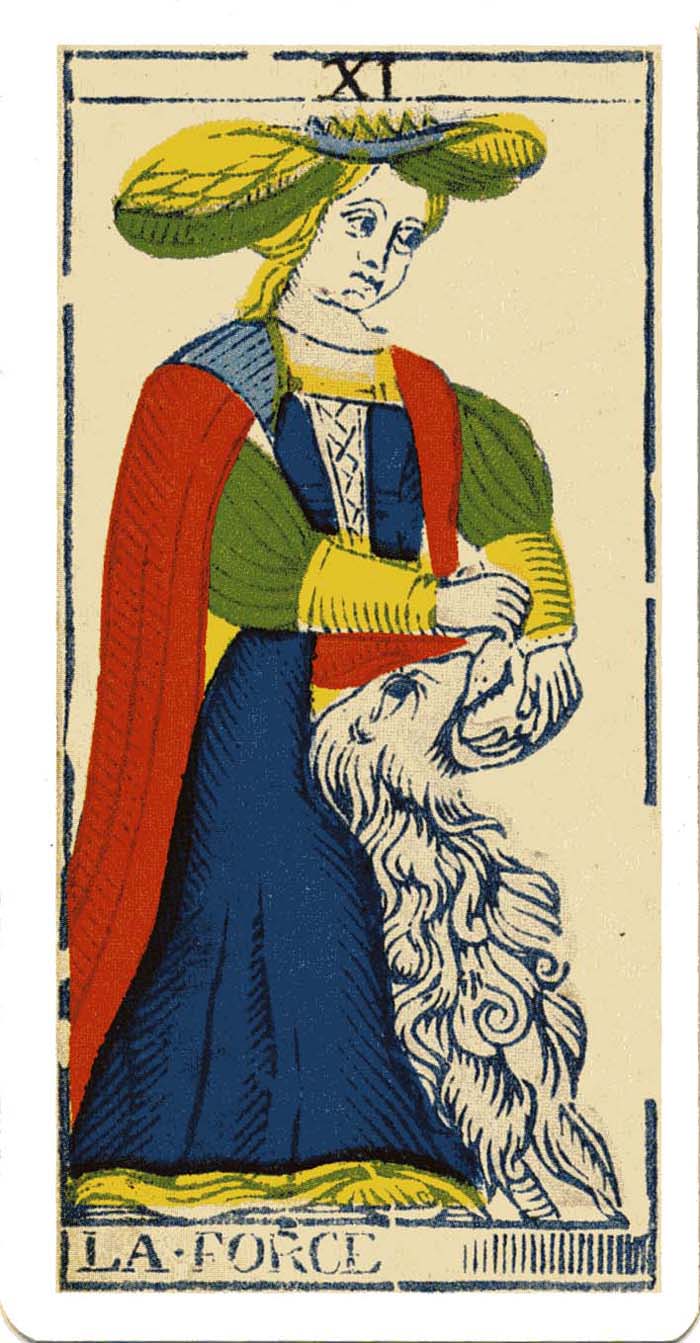 |
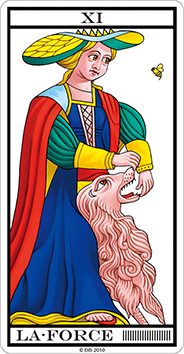 |
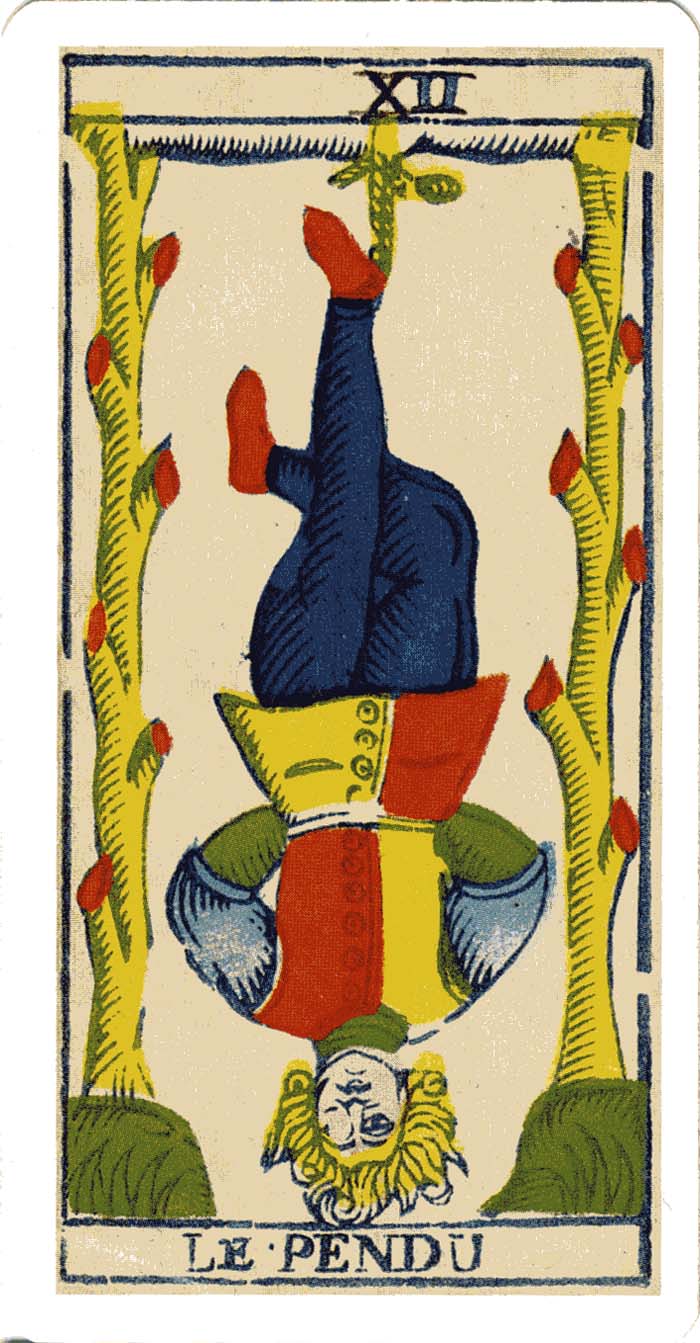 |
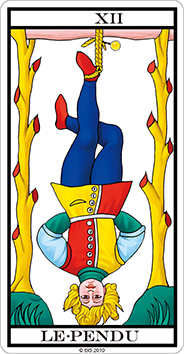 |
 |
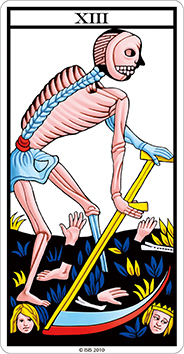 |
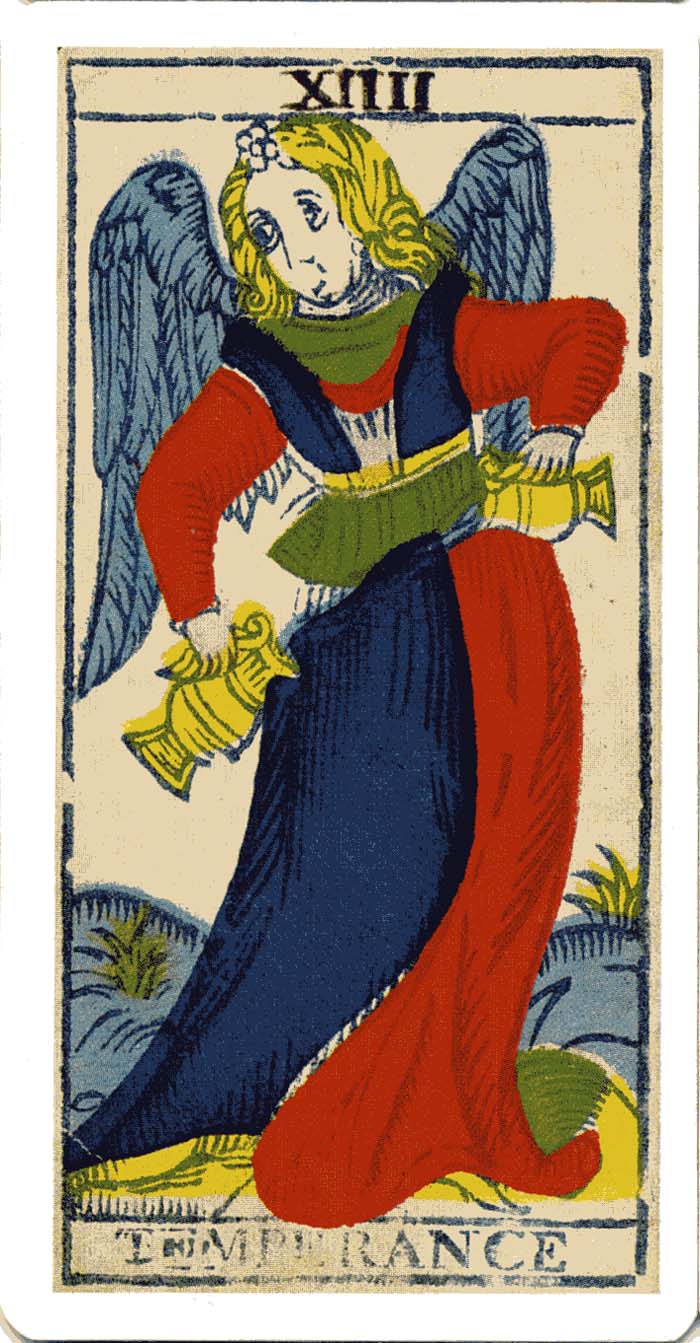 |
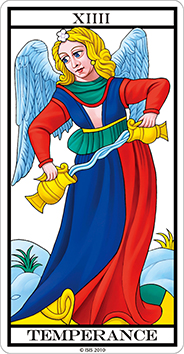 |
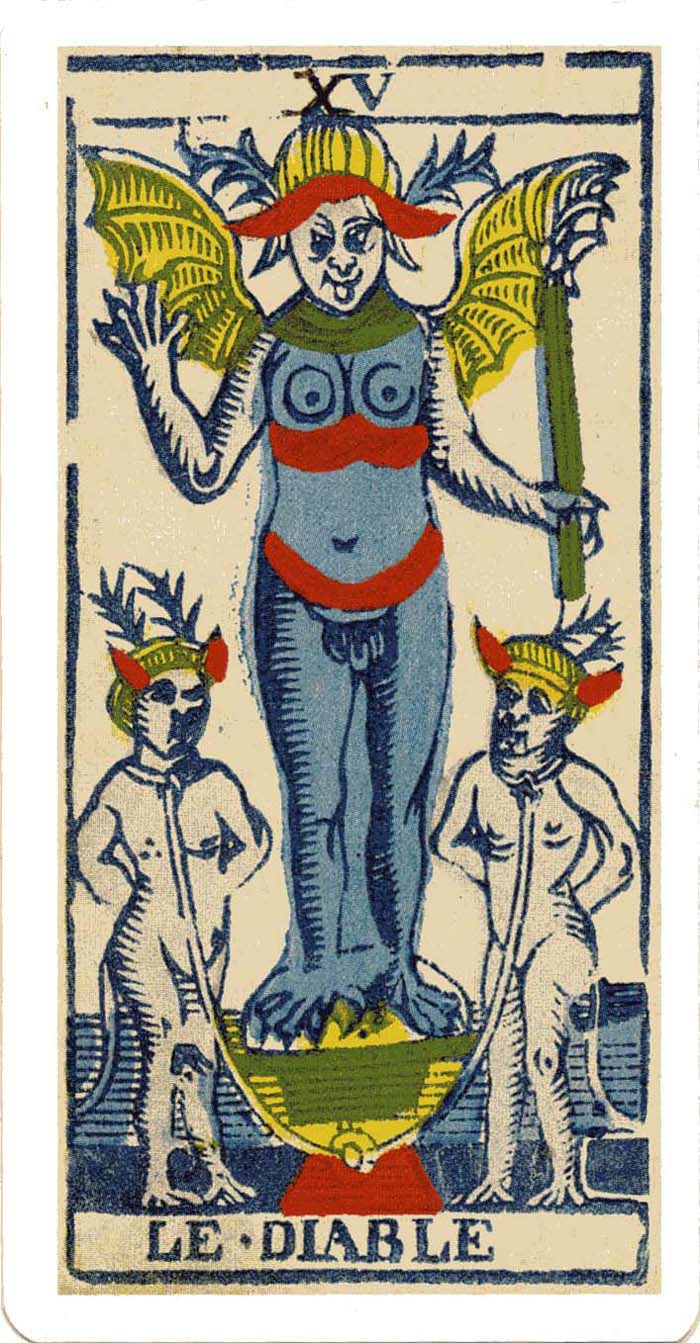 |
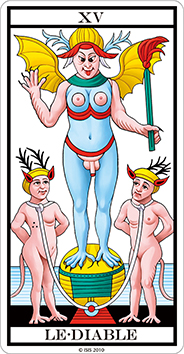 |
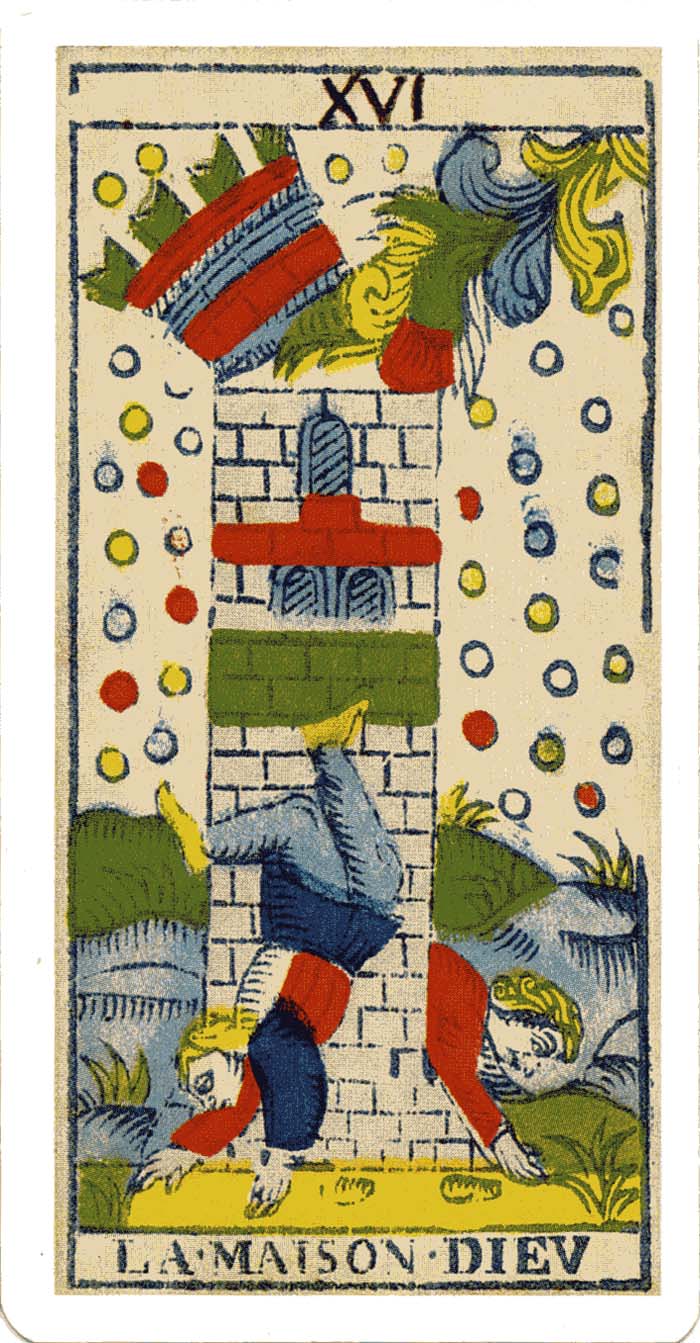 |
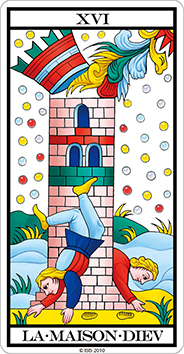 |
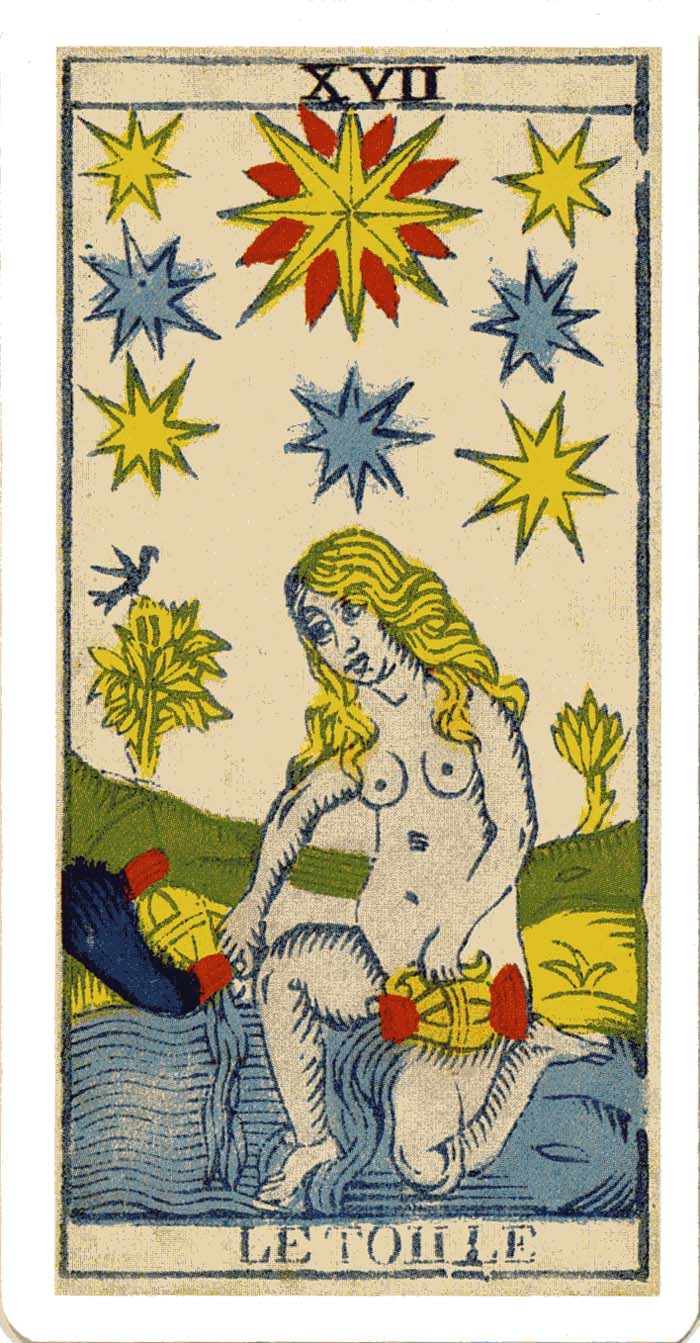 |
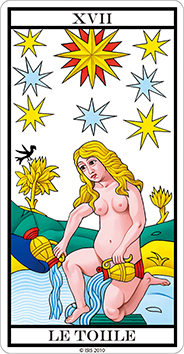 |
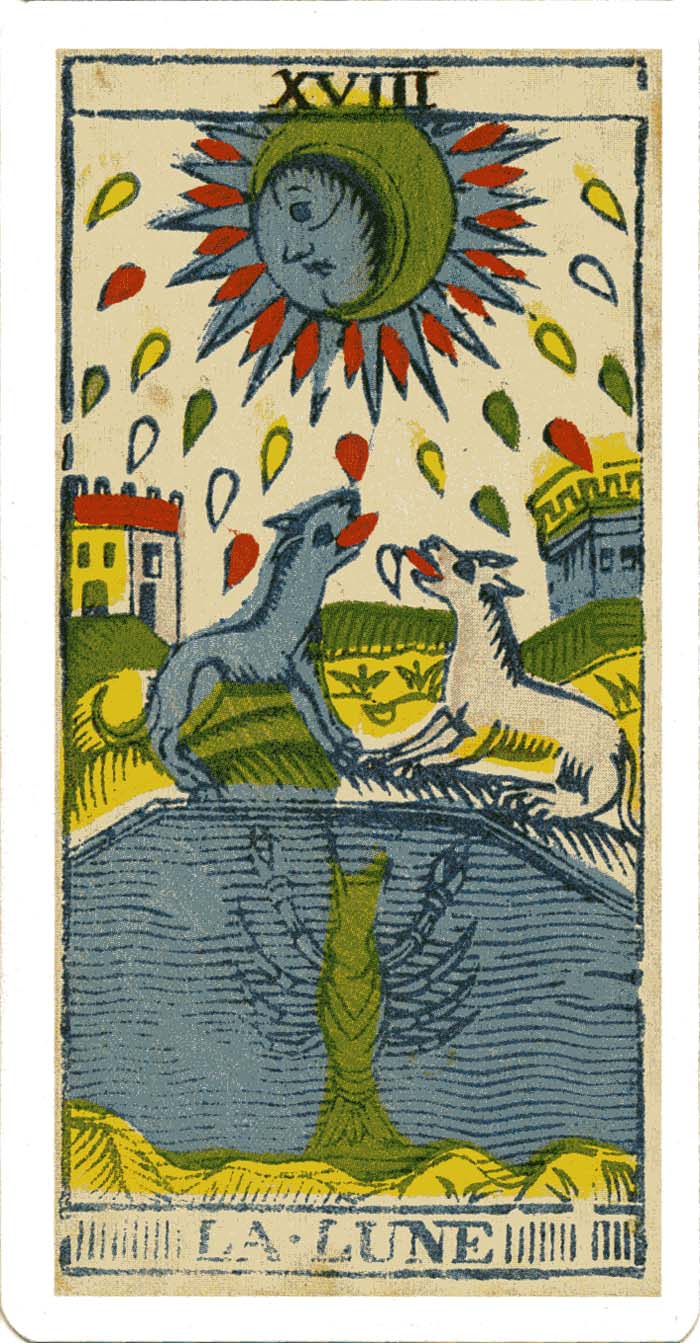 |
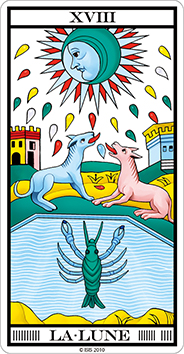 |
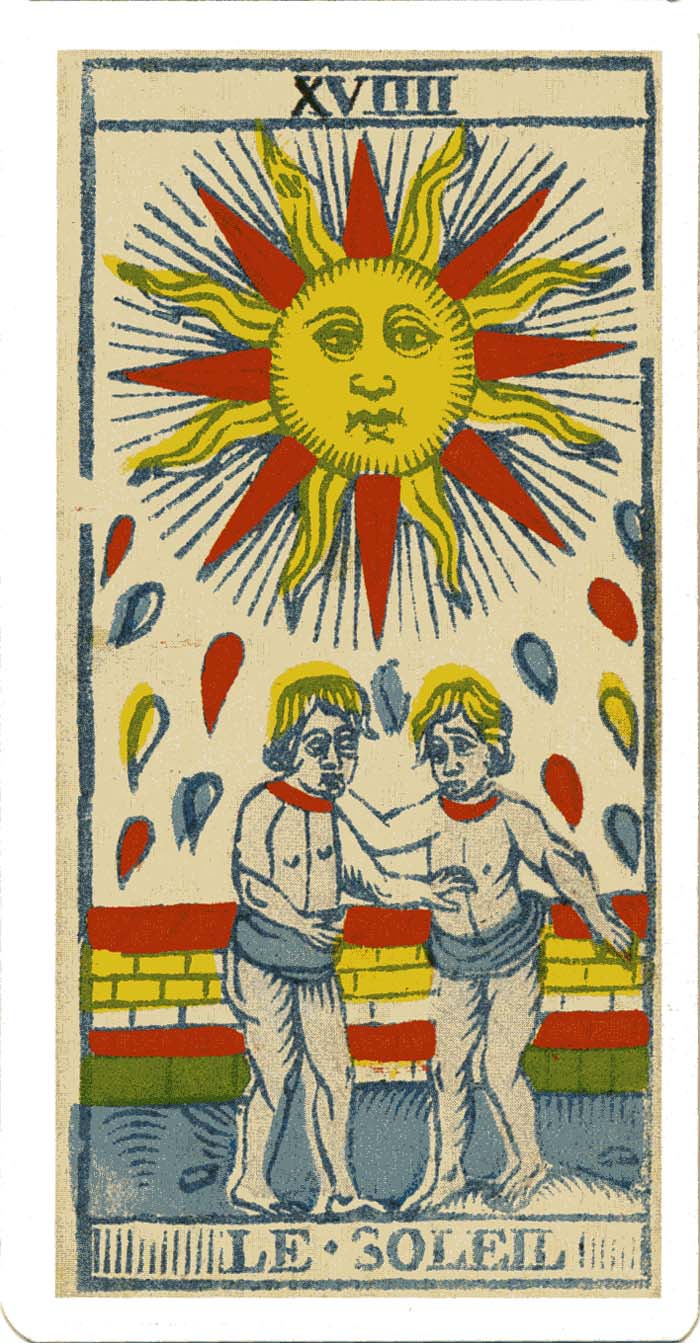 |
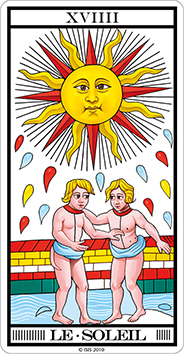 |
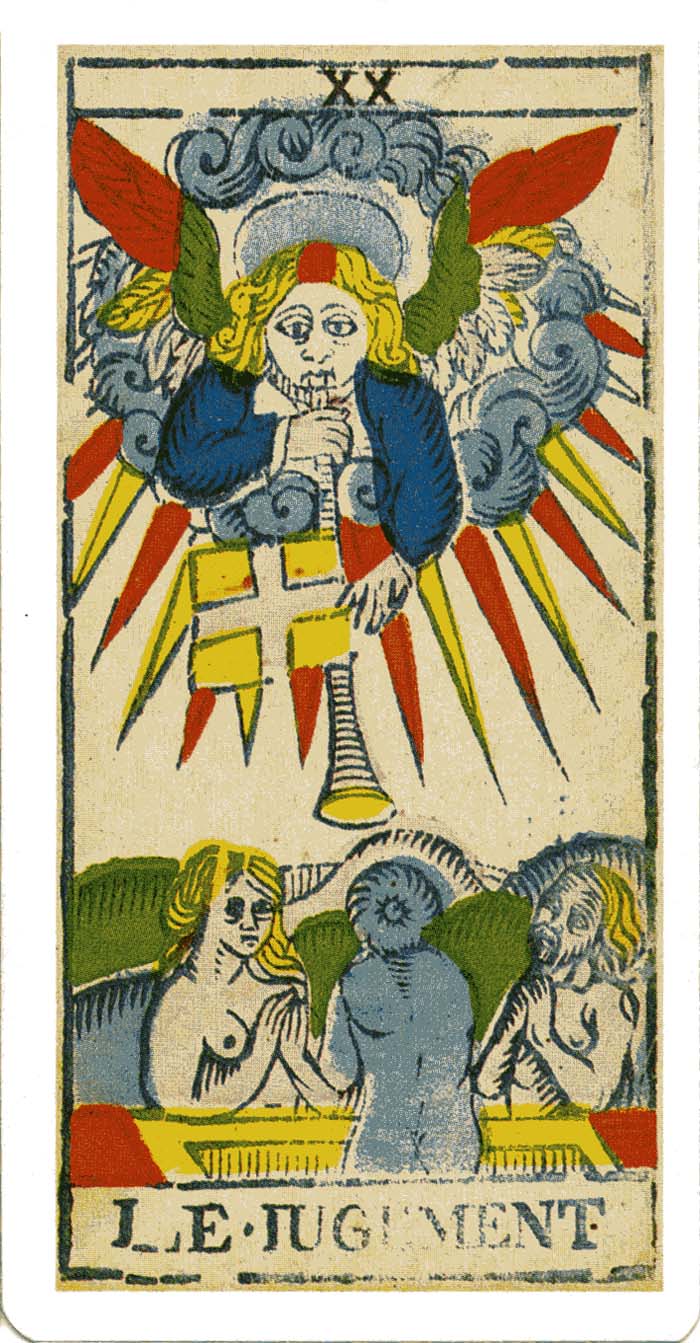 |
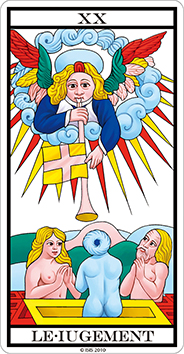 |
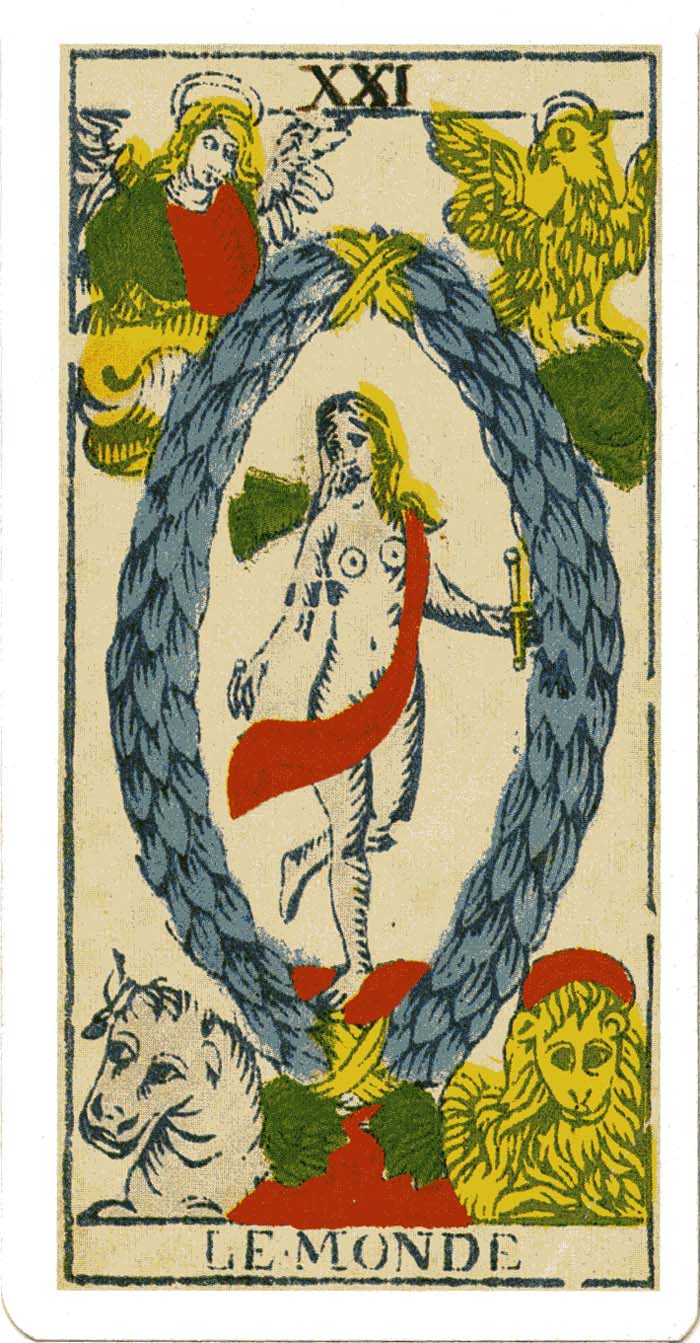 |
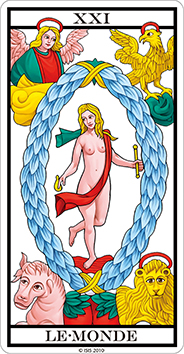 |
 |
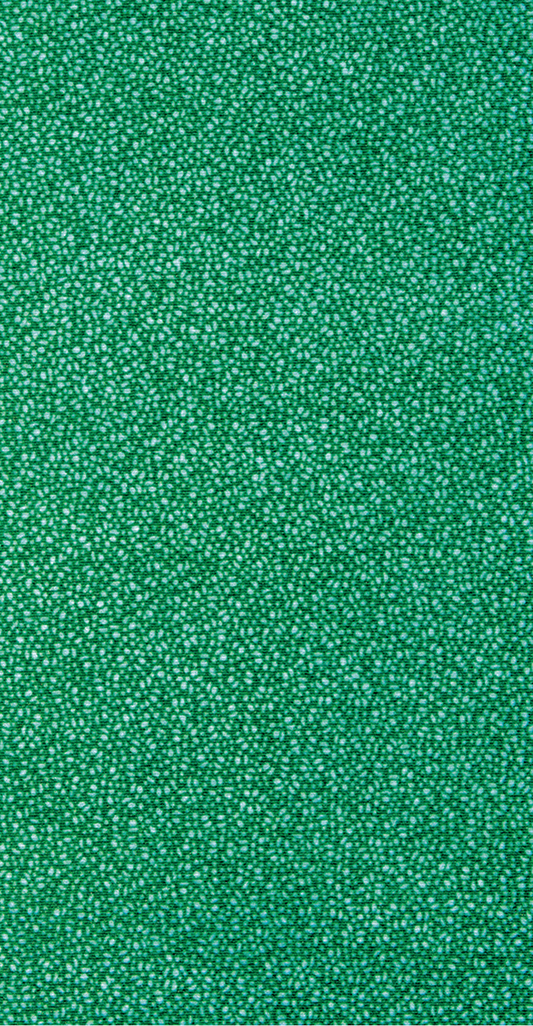 |
ISIS
Patriatower 802, 3-11-17, Ginza, Tokyo, 104-0061 JAPAN
TEL +81-3-3524-8829
FAX +81-3-3524-8879